Latvia
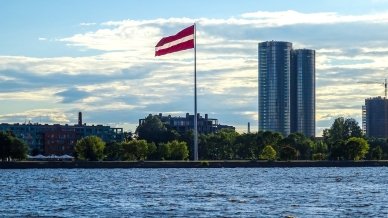
Pines, dunes, amber deposits, and well-known Riga Balsam stick in people’s memory about Latvia, a small Baltic country in the north of Europe.
There is a peculiar atmosphere of peace and tranquility. The cosy streets and cafes of Latvian cities are filled with a tasty and home-like smell of coffee and pastry. Shadowy parks attract visitors and make them reluctant to leave. And there are the Latvians themselves who always seem engrossed in their thoughts.

General Information
Latvia is one of the three Baltic countries that used to be a part of the former Soviet Union between the 1940s and the 1990s. Even nowadays, it encounters an uneasy period of development after gaining independence. However, a great deal of success has already been achieved.
Historical Background
Modern Latvia is an independent republic that used to become sovereign twice at various times in the 20th century.
The first time was in November 1918, when Latvia separated from the United Baltic Duchy. The second one took place in May 1990 when together with Lithuania and Estonia, it seceded from the Soviet Union.
Latvia became a part of the USSR in the summer of 1940. Western countries considered it an invasion, and that point of view has had the lead in the new ideology of Latvia and an official interpretation of those events.
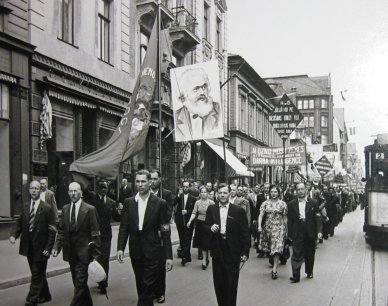
Demonstration organized by the Soviet authorities in Riga, 1940
The world and Europe, in particular, have accepted Latvia to all major organisations. The republic has been a UN member since 1991 and a member of the EU and NATO — since 2004.
The Latvian economy is based on the revenues obtained from tourism, banking sphere, food manufacturing, and logistics. The standard of living cannot be called high yet compared to indices depicted by North European countries like Norway, Finland, The United Kingdom, and others. That has caused a major demographic problem — migration of the indigenous people abroad searching for a better life there.
The migrant workers from former Soviet republics tend to ease the increasing labour shortage.
Geography and Climate
Despite a small area of 65,000 km², Latvia borders four countries — Lithuania, Estonia, Belarus, and the Russian Federation.
It also has marine borders with the Baltic Sea and the Gulf of Riga. There are also large and small rivers like the Daugava, the Gauja, the Ogre, and the Venta.
There are approximately 3,000 lakes in Latvia, and this number can be only compared to Finland.
For a good reason, the Latvian climate is called moderate. It is never too cold or too hot here, but +30°C in June may happen once in a while.
Typical Latvian weather is about +17°C - +20°C in summer and -2°C - -5°C in winter. Autumn is usually rainy, particularly in November.
Despite the moderate temperatures in summer, the seaside resorts of Jūrmala, Liepāja, and Ventspils are packed with people. The sea becomes warm enough only in July when the water temperature reaches +21°C - +23°C, though the vacationers crowd the beaches much earlier.
Latvian resorts are an excellent option for those who appreciate a European-style holiday, pleasant warmth, and tranquil atmosphere.
Population, Language, and Currency
Latvia is a small country both by area and by population. There live around two million people, and 30% of them reside in Riga, the capital city.
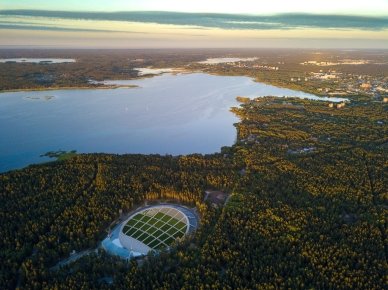
Mežaparks is one of the most beautiful, green and prestigious districts of Riga, as well as a popular recreation area
The biggest cities are Riga (615,000 people), Daugavpils (80,000 people), and Liepāja (68,000 people).
As in any other post-Soviet republic, in Latvia, there is a unique phenomenon called non-citizens. They are a peculiar category of residents holding purple (non-citizen) passports, whose rights (namely political) are partially restricted.
Non-citizens are entitled to education, medicine, and other opportunities; however, they cannot serve in the Latvian army, work in the police, public institutions, pharmaceutical companies, and vote in elections. This category includes people living in Latvia on July 1, 1992, who did not have any other citizenship except Soviet at that moment. They should undergo a naturalisation procedure that necessitates passing two exams — fluency in the Latvian language and the history of Latvia. Now every tenth person living in Latvia is a non-citizen.
There is only one official language — Latvian.
Latvia is an EU member, and the euro has been the official currency since 2014, having replaced the lats.
Directions
The most comfortable way of getting to Latvia is to travel by plane. The main air hub is the Riga International Airport, which serves a range of destinations to and from European countries, Tenerife islands, Egypt, Israel, the Russian Federation (Moscow and St. Petersburg), Georgia, and Uzbekistan.
The airport cooperates with such airlines as airBaltic, Aeroflot, Finnair, LOT, Lufthansa, Norwegian, Turkish Airlines, Uzbekistan Airlines, Wizz Air, and Ryanair.
There are no direct flights from the Americas, Australia, Asia, and Africa, and transit flights will be a way out.
Some people may also prefer a ferry route either from Sweden or Germany.
The Latvian State Railway Company provides a train connection with Russia and Estonia.
Trips by bus or car are possible too, but they are more time-consuming than flights.

Accommodation
Latvian hotels as well as the time off in this country totally correspond to the word elegance.
It is always about polite and tactful stuff, a calm atmosphere inside, soft interior colours, and excellent cuisine of hotel restaurants. Even though some people may regard such moderateness as a bit boring, the majority of visitors to Latvia highly appreciate it.
In general, prices for hotel rooms correspond to the average one in Europe. A budget-friendly three-star hotel may cost €30 - €40 per night, and the price range for a luxury type starts with €100.
As in the rest of the world, the prices vary by a hotel star rating and other merely marketing factors:
- remoteness from the centre, shops, and sightseeing places;
- the season in the resort regions and the distance to the beach;
- variety of additional services like SPAs, swimming pools, massage parlours, etc.
In Latvian hotels, even at the medium level, a so-called continental breakfast is included in the price of the stay. It is very versatile, delicious, and filling. Frequently, the hotels offer self-service buffets.
One cannot but praise the high speed of the Internet. Latvia has been in the top countries that have high-speed access to the World Wide Web. In local hotels, Wi-Fi is available free of charge.
Below are several options of hotels with different star-rating:
- Ok Hotel is a three-star Riga hotel, located 2 km from the historic centre of the capital city. The rooms have everything essential for having calm and comfortable rest. The price also includes a hearty buffet-style breakfast and a free car park. Besides, children under the age of four can live with their parents free of charge.
- Hotel Jurmala Spa is a tranquil and respectable seashore hotel. It is situated one kilometre from the city beach and a couple-of-minutes public transport ride from the waterpark. There is a restaurant (buffet-style breakfast is included), a SPA, and a free car park. An indoor swimming pool is also available.
- Hotel Sigulda is a three-star comfortable hotel designed in a typical Latvian house style. It offers comfortable rooms with separate bathrooms, balconies, a set of standard amenities like a hairdryer and an iron.
- Promenade Hotel Liepāja is a five-star hotel that overlooks the trading channel and is situated a 15-minute walk from the beach. The rooms are equipped with underfloor heating and a standard set of appliances. A luxurious restaurant offers smorgasbord breakfasts included in the general price.
- Hotel Viktorija is a three-star hotel in Riga, two kilometres from the National Museum of Art, which is housed in an ancient mansion that dates back to the beginning of the 20th century. The rooms have all the necessary facilities, and the ones of family type consist of two bedrooms. A car park and breakfast are available for an additional charge.
A tour of the Latvian rural areas is a peculiar kind of delight. You may delve into the patriarchal environment of ancient towns and villages, where the hospitality industry is also well-developed.
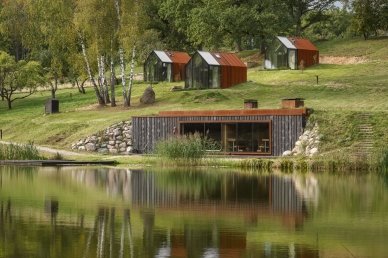
Latvian natural spa and wellness resort Zidlejas
The guests of small family houses, mini-hotels, guesthouses are offered well-kept rooms in the spirit of pre-war Latvia. There are stylish interiors, excellent bed linen, and a friendly atmosphere provided by polite staff. Visitors may also order breakfasts, lunches, dinners, and suppers. A simple but delicious and filling Latvian cuisine is exactly what you need to munch on.
Places to See
Back in the Soviet times, the Baltic republics stood out among the other USSR regions. Latvia, Lithuania, and Estonia got labelled as the Soviet overseas for a peculiar architecture, an abundance of goods in the shops, and unusually polite communication manner of their residents. Everyone who visited those countries reckoned to have seen an image of the West.
Now the travelling opportunities have changed dramatically. Though Baltic states are not perceived as something new, still they have not lost their original charm. They are markedly elegant, unflappably consistent, and old-fashioned in a good sense of this word. However, they evoke the feeling of a native overseas.
Riga
The sightseeing attractions of the Latvian capital reflect its millennial history.
Once, it used to be a tiny village on the bank of a small tributary of the Daugava. The name of the small settlement originates from an ancient Baltic ring-, which meant creek.
That river dried long ago and vanished in the sands of time. But the beautiful, comfortable and atmospheric city has existed up to date.
In the Middle Ages, Riga used to be a large and well-fortified trading city, which always attracted those who wanted to stay there for a long time. It lured the missioners of Christian churches, the warriors of German knights’ orders, and conquerors from entire Europe.
They left a massive architectural and cultural legacy that makes the city image so well-recognized and unparalleled. For a good reason, the whole historic centre of the Latvian capital has been included in the list of UNESCO World Heritage sites. Hence it is a grand crown pearl of northern Europe.
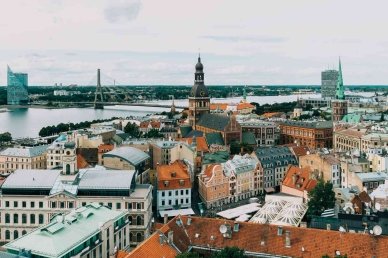
View of Riga Old Town and the River Daugava
Dom Cathedral in Riga is like the Eiffel Tower in Paris or Big Ben in London. The figure of the most known attraction of the Latvian capital has been depicted on postcards, stamps, and numerous Internet photos, which makes it a landmark.
Constructed in the 13th century as a tribute to the greatest and best God, or Deo Optimo Maximo in Latin, this Lutheran Cathedral has remained the biggest and most significant in the whole Baltics.
Its main attraction is a famous organ built by the German masters in the cathedral in the middle of the 12th century. It has been regarded as the biggest in the Baltic region. One should definitely hear its powerful and solemn tone making the listeners shiver.
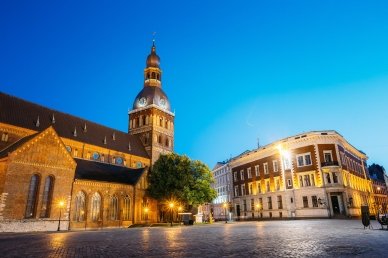
Dom Cathedral in Riga
Riga Castle is a fortress on the Daugava bank and a current residence of the President of Latvia. It once served as a shelter for the knights of the Livonian Order. After the troops of Ivan the Terrible defeated them in the 16th century, the fortress plunged into neglect and abandonment.
A new milestone began during the reign of Swedish and Polish kings and Russian tsars. The fortification began fulfilling its main purpose — protecting the city and retaining the monarchs’ secrets.
These days, Riga Castle is one of the most significant landmarks of the Latvian capital, packed with tourists regardless of the season.
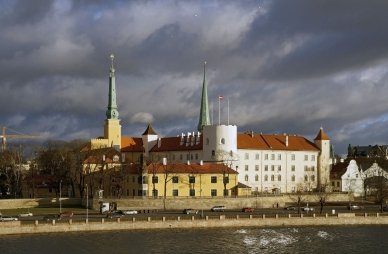
Riga Castle
There are two more must-see places in Riga — House of the Blackheads and Cat House.
The first one is the completely renovated in the 1990s House of Large Merchant’s Guild located on the City Hall Square. The Blackheads were the Riga merchants in the Middle Ages whose patron was Saint Maurice, a Christian martyr.
The depiction of his black head was an element of the Gild’s coat of arms. As a result, the merchants got the name of blackheads, and the building where they gathered began to be called the House of Blackheads.
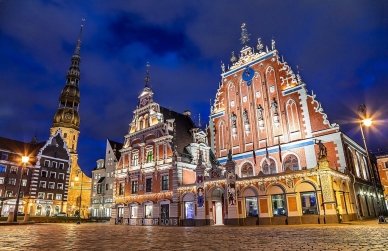
House of the Blackheads, Riga, Latvia
Cat House is an example of a true architectural caricature of the 20th century.
Human resentment and bruised ego can sometimes have the most surprising expression. Cat House is a so-called protest of one merchant from Riga. Despite all man’s attempts and wiles, the Guild was not willing to accept him as a member of the Large Guild.
The offended merchant put the cat figures onto the spikes of his house towers. He deliberately fixed the statues with their backs turned to the House of Blackheads.
The metallic cats were positioned sitting to express the discontent of their master. It was the response to the free will of the traders until the Blackheads changed their decision.
The merchant was approved as the Guild member, but he turned only one cat full-face to the building. The second cat has remained sitting back to the Blackheads and disrupting the symmetry of the merchant’s house towers.
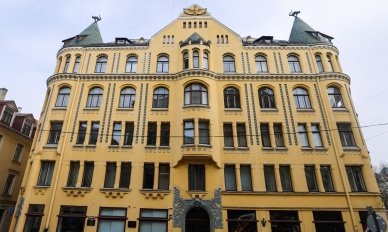
Cat House in Riga, Latvia
Jūrmala
We cannot but mention this seaside city that once became famous for its European pop-music festivals.
However, this music-style get-together is not the only reason to visit Jūrmala. Even a simple walk across the streets of the old Latvian city will bring much pleasure. The facades of local houses are rolling in the delicate lace of fantastic carved patterns of the window trims, balconies, mansards, and doorways.
Jūrmala is also a place where the Latvian poetry lovers aspire to come. They visit the museum house of Rainis and Aspazija — a married couple of poets, Emilija Rozenberga and Jānis Pliekšāns. He was the creator of tragedy as a genre of Latvian literature.
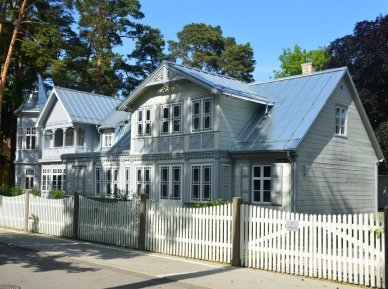
Museum house of Rainis and Aspazija in Jūrmala
The Museum of Prison History also evokes much interest and makes the visitors delve into the peculiar world of the penal system due to the exhibits and the atmosphere itself.
The guests of Jūrmala will get the overriding impressions after attending the exhibition of artist Vitaliy Yermolayev at the ART Residence INNER LIGHT. Unhackneyed illumination and other visual effects create incredibly beautiful images.
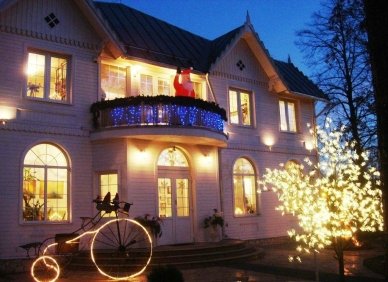
ART Residence INNER LIGHT in Jūrmala
Getting on a tour to Jūrmala is possible only by ferry from Riga.
In Latvia, there are many other places apart from Jūrmala that will fascinate with their discreet and quiet beauty.
Kuldīga is one of them. It is a tranquil town, located 150 km from Riga, famous for its flying fish (seems impossible, does not it?), cave labyrinth, and Europe’s biggest waterfall Ventas Rumba.
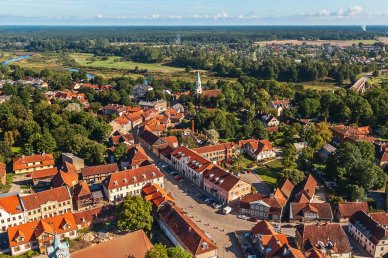
Kuldīga, Latvia
Sigulda is another little paradise in Latvia. In a 50-km drive from the capital, you will end up in the magnifying surroundings and the atmosphere of ancient times.
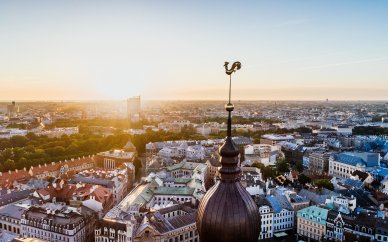
Sigulda, Latvia
Have a tour of Turaida Castle, an architectural monument that dates back to the 13th century. And if you are lucky enough to get there on a holiday, do not lose a chance to listen to the concert of classical or sacred music.
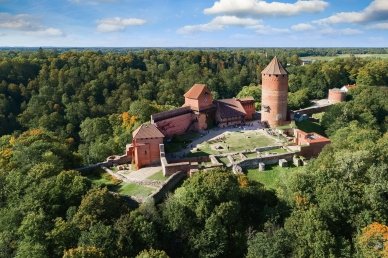
Turaida Castle
Gauja National Park is the kilometres of massifs, rocks, caves, and springs, surrounded by ancient castles and settlements. The latter were masterfully renovated by Latvian professionals.
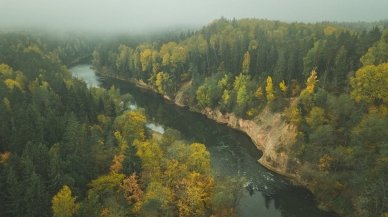
Gauja National Park, Latvia
Vienkoču Park, which offers a range of workshops of arts and crafts, and Krimulda Cable Car, which shows loads of magnificent views of natural reserves, will become an excellent option for having family rest.
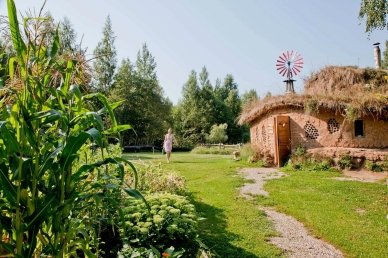
Vienkoču Park, Latvia
Food
Do you like eating pearl barley as the Latvians do? These ordinary gray cereals are an indispensable ingredient of many dishes of Latvian cuisine like porridges with fish, soups, ragouts, and baked puddings.
Much popularity has been gained by peas dishes (namely the local gray type), beans, pastries, fermented dairy food, cheeses, and an abundance of Baltic fish — herring and sprat.
They eat all types of meat in Latvia, but pork is their favourite.
In general, Latvian cuisine is about high-quality products, an excellent taste of cooked food, its nourishing value, and unquestionable healthiness.
The variety of dishes ranges from simple, thick cottage soups to exquisite desserts made according to ancient recipes at Riga’s confectionaries.
If you are planning to visit Latvia, do not hesitate to try the national cuisine. Below are the most known and delicious dishes:
- Gray peas — a specific variety of peas boiled in water and served with pieces of fried onions and lard;
- Blood sausage and pancakes (Putraimdesas);
- Carnikava lamprey (Carnikavas nēģi) — an exquisite fish dish that impressed Empress Catherine the Great;
- Sklandrausis — a vegetable pie;
- Delicious kissels — oats- and peas-based and also the ones made of rhubarb and milk.
And the delicious dessert called bubert is a must. It is a tender semolina pudding with cream and whipped egg whites, usually served with sour-sweet fruit sauce or kissel.
Latvia is versatile. It is simple in a country-like manner and refined and reserved in an urban way. There is no better place to start your acquaintance with northern Europe.
FAQ
How big is the area of Latvia?
Latvia covers an area of about 64,589 square kilometers.
What form of State is Latvia?
Latvia is a parliamentary republic.
What is the capital of Latvia?
The capital of Latvia is Riga.
What is the population of Latvia?
The population of Latvia is approximately 1.9 million people.
What is the official currency in Latvia?
The official currency of Latvia is the Euro (EUR).
What is the main religion in Latvia?
The main religion in Latvia is Christianity, with Lutheranism being the largest denomination, followed by Roman Catholicism and Eastern Orthodoxy.
Does Latvia have a good economy?
Latvia has a developing economy that has been transitioning since the end of the Soviet era. It has made significant progress, but still faces challenges like income inequality and emigration.
Is Latvia a member of the EU?
Yes, Latvia is a member of the European Union.
Is Latvia a Schengen?
Yes, Latvia is part of the Schengen Area.
What is Latvia best known for?
Latvia is known for its rich cultural heritage, beautiful landscapes, historic architecture, especially in Riga's Art Nouveau district, and for its traditions in folk music and singing.
Is Latvia a cheap country?
Compared to Western Europe, Latvia is relatively inexpensive, but it may be more expensive than some Eastern European countries.
Is Latvia good for tourists?
Latvia is an attractive destination for tourists, offering historical sites, natural beauty, and vibrant cultural experiences, particularly in Riga.
What is needed to travel to Latvia?
Travelers to Latvia typically need a passport valid for at least six months. EU citizens can enter with an ID card. Visitors from many countries require a Schengen visa for longer stays. It's also advisable to check for any specific health or travel advisories.
